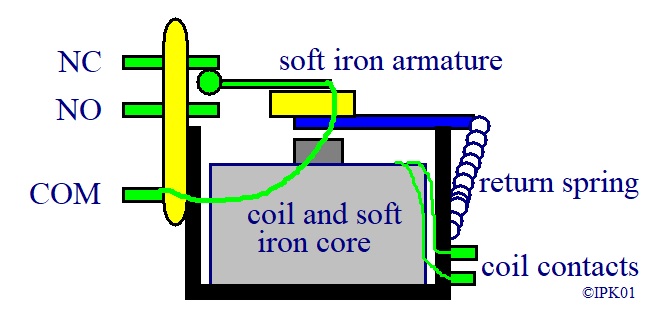
Electromagnetic Relays

This rocks on a pivot and so closes the Normally Open (NO) contacts and opens the Normally Closed (NC) contacts.
These contacts can be used to switch a separate circuit.
The current needed to operate a relay is called the pull-in current.
The relay will switch back to its initial state when the current in the coil is reduced to a certain value, known as the drop-out current.
A relay tends to be slow acting due to the mechanical movement of the armature.

This generates a large induced voltage as a result of the energy stored in the coil.
This induced voltage will damage the transistor being used to drive the relay.
A diode is connected in parallel with the relay so that it is in reverse bias with the voltage supply.
The diode offers an easy path to the induced voltage and so prevents the transistor from being damaged.
Any transistor or MOSFET (semiconductor) switching a device with a coil MUST be protected in this way.

A double pole, double throw relay.
More relay pictures
Their advantages include:-
- complete isolation of the load circuit from the processor circuit
- switching very large voltages and currents
- switching very small voltages and currents
- very low contact resistance so very little power wasted/dissipated
- robust and reliable - will not fail if slightly overloaded